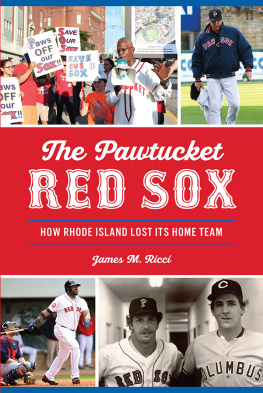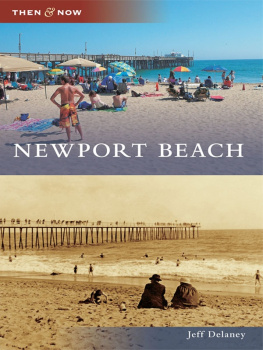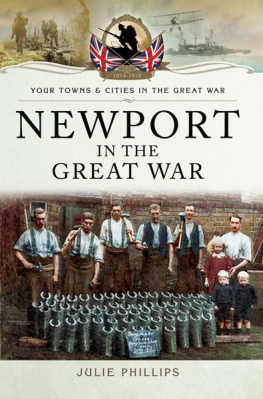

Published by The History Press
Charleston, SC
www.historypress.com
Copyright 2018 by James M. Ricci
All rights reserved
Front cover: Aerial view of the Newport Bridge looking east toward Newport from Jamestown. Courtesy of the Rhode Island Turnpike and Bridge Authority; bridge worker Joe Muldoon, high above Narragansett Bays East Passage. Courtesy of Joe Muldoon; Governor Frank Licht congratulating the first bridge crosser, Paul Cummins, of Friendship, Maryland, whose family were on their way to Cape Cod. Photo by Jerry Taylor, courtesy of Mark Taylor; the final steel, dressed with the traditional American flag, being lifted into place, closing the last remaining gap between Newport and Jamestown. Courtesy of the Rhode Island Turnpike and Bridge Authority.
First published 2018
e-book edition 2018
ISBN 978.1.43966.483.4
Library of Congress Control Number: 2018936094
print edition ISBN 978.1.46713.958.8
Notice: The information in this book is true and complete to the best of our knowledge. It is offered without guarantee on the part of the author or The History Press. The author and The History Press disclaim all liability in connection with the use of this book.
All rights reserved. No part of this book may be reproduced or transmitted in any form whatsoever without prior written permission from the publisher except in the case of brief quotations embodied in critical articles and reviews.
Courage and perseverance have a magical talisman, before which difficulties disappear and obstacles vanish into air.
John Quincy Adams
To Victor C. Ricci,
19191995,
World War II Veteran, Airport Engineer, FatherCONTENTS
FOREWORD
Rhode Island is a small state with sizable populations living full time on islandsAquidneck, Conanicut, Block, Prudence, and Hog. Ferries served as early means of transportationand to some islands still do. When possible and over time, bridges have been erected.
Jim Ricci has told a wonderful story about the building of the most magnificent of these bridges. The Newport Bridge is now a fifty-year-old symbol of our state. Mr. Ricci colorfully shares with us all the challenges: cost; engineering; route; U.S. Navy requirements; politics, state and local; and union issues, to name a few. The building of this monument was a monumental task!
My father, John Chafee, fought for our country on Guadalcanal, on Okinawa, and in Korea. He was secretary of the navy and an influential
U.S. senator. But he always said he most loved being governor and that his proudest achievement was the successful resolutions to all the myriad difficulties in constructing the Newport Bridge. As Mr. Ricci accurately writes, he not only wanted the structure to be beautiful to behold, but also, for the drivers and passengers crossing it, to be able to view from on high our beautiful East Passage of Narragansett Bay. For fifty years now, peoples breaths have been taken away by the vistas. My father would be smiling that this story has been written.
Jim Riccis book is meticulously researched, which makes reading it enjoyable. It is a drama set in a state known for its character and characters. Mr. Riccis writing reflects the tenacity of the main characters with his attention to detail. The bridge rose from the bedrock deep beneath Narragansett Bay to become a proud symbol of our beautiful state. Thank you to Jim Ricci for writing this fascinating book.
LINCOLN CHAFEE
PREFACE
This is the story of the Newport Bridge from its conception following World War II to its opening on June 28, 1969. (Most Rhode Islanders refer to the structure as the Newport Bridge, despite its subsequent renaming in 1992 by the state legislature to honor Senator Claiborne Pell; this story uses its original name.) Spanning the East Passage of Narragansett Bay, the bridge connects the islands of Conanicut and Aquidneck and links their primary towns of Jamestown and Newport. Prior to the bridge, ferries had delivered passengers to and from Newport for three centuries. That service became obsolete the day the bridge opened.
The bridges history can be traced back to the years leading up to World War II. In 1940, the Jamestown Bridge was completed between the Rhode Island mainland and Conanicut Island. Momentum soon grew for a Newport Bridge, but the war relegated efforts to the back burner. After the war, proponents advocated for a bridge. They encountered initial resistance from the United States Navy bent on protecting its well-established and extensive operations in and around Narragansett Bay. The navy subsequently relented but placed conditions on the bridges location and navigational requirements. Proponents and opponents sparred from 1945 to 1965, when the bridge was finally approved by Rhode Island voters. Upon completion, the 2.13-milelong Newport Bridge became the longest suspension bridge in New England, as well as fourteenth-longest nationally. It employed several new technologies and construction techniques, demonstrating the autocatalytic nature of the technology and drawing the engineering communitys attention.
The many proposals for a Newport Bridge had one thing in common: a continuous link from the Rhode Island mainland to Newport. Courtesy of RITBA.
This study pieces together the quarter-century-long struggle that proponents endured before the bridge was finally built and grew to become an iconic symbol of Newport and the state of Rhode Island. The Newport Bridge is truly a monument to their perseverance.
ACKNOWLEDGEMENTS
It is essential to have a good mentor when tackling a project such as this. In Dr. John Quinn, chairman of the history department at Salve Regina University, I had a great one. His enthusiasm and constructive suggestions contributed significantly to this story from start to finish.
Dr. Michael Budd, director of Salve Regina Universitys Humanities Graduate Program, and Dr. Robert Russell, professor of cultural and historic preservation at Salve Regina University, provided much-needed recommendations that shaped this book.
During this work, Dr. Eric Shaw passed away. He was a professor at the Naval War College and Salve Regina University. He was an early advocate of researching the Newport Bridge and urged me to make the story my own. I hope I came close to fulfilling his advice.
Dr. Susan Turner spent hours closely reading this document. Her keen eye improved its quality by leaps and bounds. Kate Wells, Rhode Island Collection curator at the Providence Public Library, captured and delivered an abundance of material. Peter Janaros, former director of engineering for the Rhode Island Turnpike and Bridge Authority, patiently explained the technical methods used in building the Newport Bridge.
I am very grateful to the generosity of time and resources of Rosemary Enright and Sue Maden of the Jamestown Historical Society, repository of a treasure-trove of information, artifacts, and photos about the Newport Bridge, the Jamestown Bridge, and the Jamestown ferries. Joe Muldoon, who worked on the bridge as a young man, shared stories and photos about his experience.














